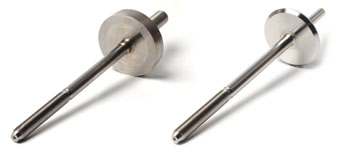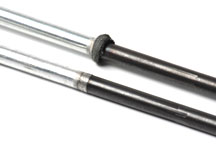Why Choose Friction Welding?
Friction welds provide a strong bond without the use of bolts and/or screws or the addition of extra weight from fillers.
The full-penetration fusion of material occurs across the entire weld face surface, creating a non-porous contaminant free joint with immense strength.
The weld zone will have strength equal to or greater than the parent material. It is fully machinable as solid billet.

BONUS! The Friction Welding Design tends to clean the surface between the materials – removing any debris or dirt. This usually eliminates a need to prepare the two joining surfaces prior to the friction welding process.
Join Unusual Shapes
Bring together components made from a variety of industrial processes. This example shows bonding of casting to forging.

Create Near-Net Shapes
Reduce Material Consumption and Machine Time

Reduce Weight
Place Hollow Tubes Between Solids
Many industries are seeking to reduce part weight to enhance the energy efficiency of their products. In transportation, Friction Welding can help with areas like driveline and suspension components.
Testing shows that tubular fabrications with solid ends hold up to strength testing established for parts previously forged from full-length solids.


Bond Dissimilar Metals
Target Special Alloys to Specific Zones
One of the biggest incentives for choosing a friction welding design as your joining process is that it allows you to combine dissimilar materials.
Normal welding doesn’t allow the joining of different materials, but friction welding does. Now you can focus on using exotic alloys to special use areas like “wet zones”. The balance of the part that remains sealed in a housing, for example, can be made from a mild steel.

Bi-Metal rods shown before and after removal of weld “flash”
Sizing Guidelines
18 Friction Welding Machines Offer A Variety Of Diameters
- Solid diameter shafts from .125” to 7”.
- Join to ends up to 30” diameter depending on shape and depth.
- Tube diameters from .375” to 12”.
Lengths Vary By Machine
- Up to 114” in largest diameters.
- Up to 168” in medium diameters.
- Up to 48” in small diameters.
- Up to 6” in micro diameters.